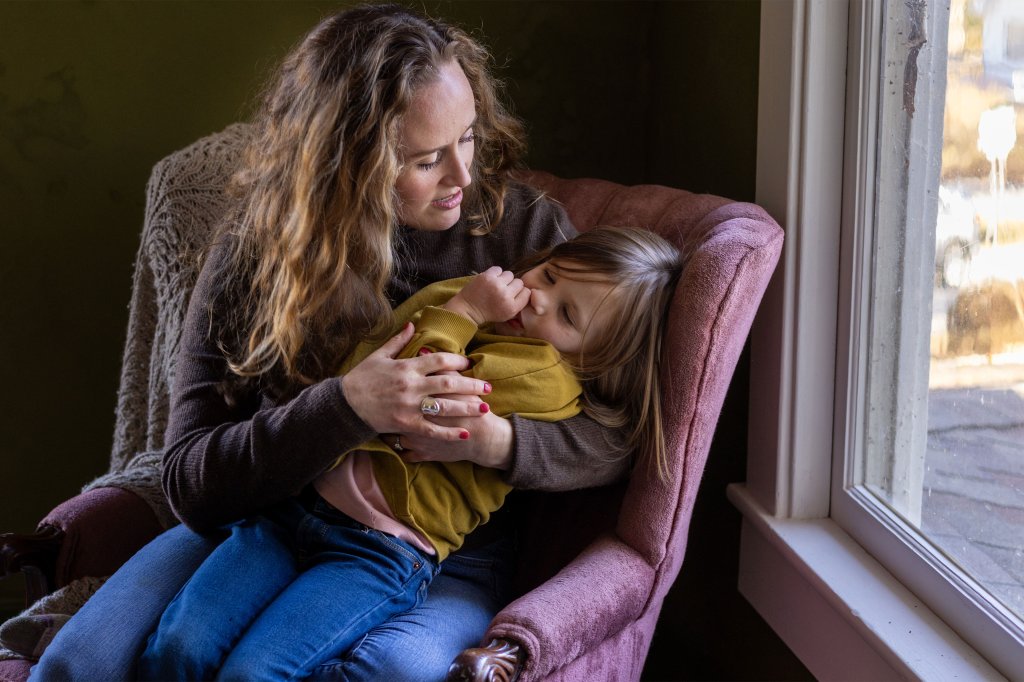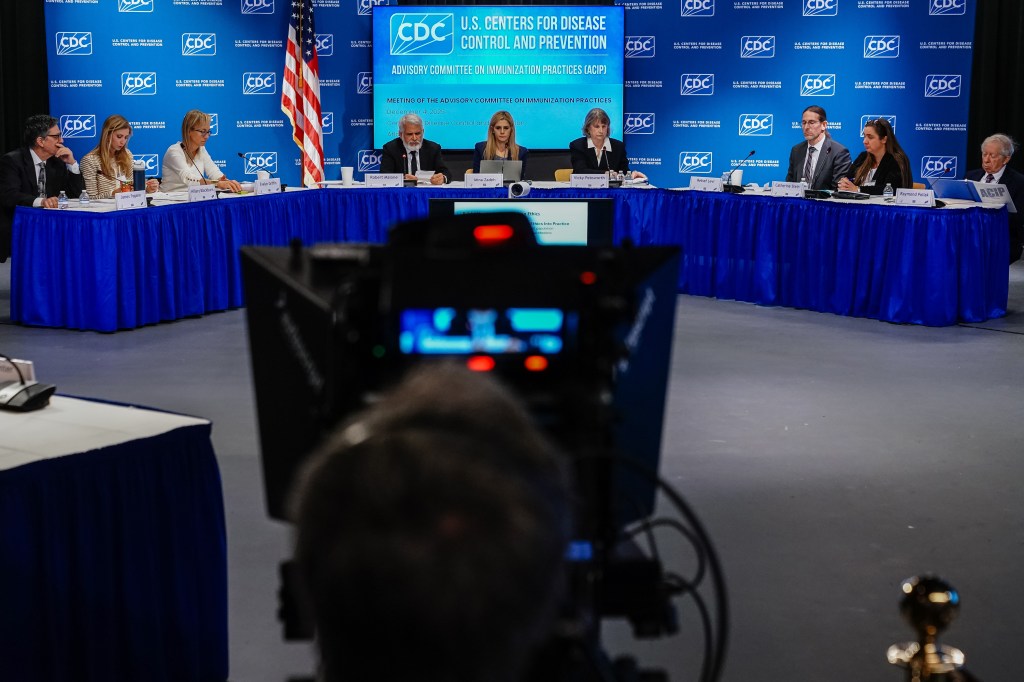“Almost 5 million able-bodied Medicaid recipients ‘simply choose not to work’ and ‘spend six hours a day socializing and watching television.’”
Scott Jennings on “CNN NewsNight with Abby Phillip” on July 1
Republicans defended the GOP megabill’s Medicaid changes as targeting a group of people they believe shouldn’t qualify: people who can work but instead choose to stay home and chill.
Several Republican politicians and pundits, including CNN senior political commentator Scott Jennings, pegged that group’s size at about 5 million people.
“There are like almost 5 million able-bodied people on Medicaid who simply choose not to work,” Jennings said July 1 on “CNN NewsNight with Abby Phillip.” “They spend six hours a day socializing and watching television. And if you can’t get off grandma’s couch and work, I don’t want to pay for your welfare.”
Centers for Medicare & Medicaid Services Administrator Mehmet Oz picked up on some of these points during a July 14 appearance on Fox News. “When the program was created 60 years ago, it never dawned on anyone that you would take able-bodied individuals who could work and put them on Medicaid. Today the average able-bodied person on Medicaid who doesn’t work, they watch 6.1 hours of television or just hang out,” Oz said.
Medicaid is a federal-state health insurance program that covers medical care for lower-income people.
Jennings cited two pieces of data: an estimate of how many fewer people would have coverage because of the work requirement and an analysis of how nonworking Medicaid recipients spend their time. But he made assumptions that the data doesn’t support.
Jennings Misrepresents CBO Estimate
The 4.8 million figure stems from a June 24 Congressional Budget Office analysis of a preliminary House version of the massive tax and spending package. The office, Congress’ nonpartisan research arm, projected that provisions of the bill would cause 7.8 million fewer people to have health coverage by 2034. They would include 4.8 million people previously eligible for Medicaid described as “able-bodied” adults 19 to 64 years old who have no dependents and who “do not meet the community engagement requirement” of doing “work-related activities” at least 80 hours a month.
Apart from working, doing community service and attending school also fulfill the community engagement requirement.
Jennings paired that statistic with a separate analysis of how nondisabled adult Medicaid recipients without dependent children spend their time.
But the CBO estimate was a projection — it doesn’t represent the current number of nondisabled Medicaid recipients, nor does it say 4.8 million people in this group “choose not to work.” The figure represented how many fewer people would have coverage because of the bill’s community engagement requirement.
“The challenge with Jennings’ comments — and they’ve been echoed elsewhere by elected Republicans — is that CBO never said that 4.8 million people were out of compliance with the proposed work requirements; they said that 4.8 million people would lose coverage because of the work requirements,” said Adrianna McIntyre, an assistant professor of health policy and politics at the Harvard T.H. Chan School of Public Health.
Among the Medicaid expansion population, the law requires most adults without dependent children and parents of children older than 13 to work or participate in other qualifying activities 80 hours every month. States will need to verify that applicants met the work requirement for one to three months before they applied. States will also be required to verify that existing enrollees met the work requirement for at least a month between eligibility determinations, which will be required at least twice a year.
Research into Medicaid work requirements imposed at the state level has shown that people found it difficult to fulfill them and submit documentation, contributing to coverage losses.
In Arkansas, which added a work requirement to Medicaid in 2018, a study based on nearly 6,000 respondents found that about 95% of the target population were already working or qualified for an exemption, but a third of them did not hear about the work requirements. As a result, nearly 17,000 Medicaid recipients subject to work requirements lost coverage.
KFF found that adults ages 50 to 64 are more at risk of losing Medicaid coverage because of the new work requirements. More than 1 in 10 in that age group said they had retired, and among them, 28% reported being disabled, said KFF, a health information nonprofit that includes KFF Health News.
Benjamin Sommers, a health care economics professor at the Harvard Chan school, said many of the 4.8 million “able-bodied” people in the CBO estimate “will actually be engaged in the activities they are supposed to be doing, and lose coverage because they are not able to navigate the reporting requirements with the state and lose coverage from red tape.”
When Recipients Don’t Work, It’s Rarely From Lack of Interest
There is no universal definition for “able-bodied”; disability can be assessed in different ways. But other studies offer much smaller estimates than 4.8 million Medicaid recipients without dependents who can work but choose not to.
Millions of working-age, nondisabled adults joined the Medicaid ranks in states that expanded eligibility under the Affordable Care Act. There were about 34 million working-age nondisabled Medicaid enrollees in 2024, according to the CBO, 15 million of whom enrolled through the ACA.
A KFF analysis found a smaller figure of 26 million Medicaid-covered adults, ages 19 to 64, who don’t receive Supplemental Security Income, Social Security Disability Insurance, or Medicare benefits.
Among this group, KFF estimated, 64% were working either full time or part time. The reasons the rest were not working included caregiving (12%); illness or disability (10%); retirement, inability to find work, or other reason (8%); and school attendance (7%).
Few people cited lack of interest in working as the reason for their unemployment. An Urban Institute study found 2% of Medicaid expansion enrollees without dependents who neither worked nor attended school — or 300,000 people out of a projected 15 million subject to work requirements — cited a lack of interest in working as the reason they were unemployed.
This was consistent with the Brookings Institution’s June 5 analysis that found that, of 4.3 million adult enrollees who worked fewer than 80 hours a month and did not have any activity limitations or illnesses, about 300,000 reported that they “did not work because they did not want to.”
Mostly Women, Mostly With a High School Degree or Less
When Republicans have described nondisabled adult Medicaid recipients, they have often portrayed them as men in their 30s “playing video games” in their parents’ basement or who “smoke weed all day.” Research paints a different picture.
Jane Tavares and Marc Cohen, of the University of Massachusetts-Boston Gerontology Department, researched Medicaid recipients who are not disabled or working, have no dependent children under 18, and are not in school. They cited 2023 census data from the American Community Survey.
They found:
The average age of this population is 41, and 26% are older than 50.
Almost 80% are female.
Most, 80%, have a high school education or less.
Their median individual income is $0, and their median household income is $44,800.
About 56% worked in the past five years, and 23% worked in the prior year. About 30% are looking or available for work.
“They are not healthy young adults just hanging out,” the authors, along with health law experts Sara Rosenbaum and Alison Barkoff, wrote April 30.
“It’s clear based on their prior work history and family size/income that they are exceptionally poor and have likely left the workforce to care for adult children or older adults,” Tavares told PolitiFact. “Even if these individuals could work, they would have very few job opportunities and it would come at the cost of the people they are providing care for.”
AEI Study Not Definitively Linked to CBO Estimate
On the social platform X, Jennings posted the CBO letter and a May 29 analysis by the American Enterprise Institute, a conservative think tank, about “how nondisabled Medicaid recipients without children spend their time.” PolitiFact contacted CNN to reach Jennings but did not receive a reply.
The author of that study, American Enterprise Institute senior fellow Kevin Corinth, analyzed survey data and found that Medicaid recipients who do not report working spend on average 6.1 hours a day “on all socializing, relaxing and leisure activities (including television and video games).”
But it’s uncertain whether the people in the survey population he analyzed overlap with the people included in the CBO analysis, said Jennifer Tolbert, deputy director of KFF’s Program on Medicaid and the Uninsured.
Corinth told PolitiFact “it is difficult to say” how the population he analyzed differs from the CBO’s. Tavares, Cohen, Rosenbaum, and Barkoff said Corinth’s dataset defined disability narrowly, leading to a “serious underestimation of disability” among the population of Medicaid recipients he looked into. It focused on Medicaid recipients who receive Supplemental Security Income or have a health condition that prevents them from working. The researchers said this approach is too narrow because the SSI program accounts for only those “most deeply impoverished adults with severe disabilities.”
The group gave a hypothetical example of a 54-year-old woman with a serious heart condition who can work only a few hours a week. She may not be considered disabled under the SSI program, but she may be limited in the work she can do and may need time to rest.
“Using her ‘leisure time’ to justify a work requirement grossly misrepresents her reality,” the group wrote.
Corinth’s analysis also shows that nonworking Medicaid recipients spend less time socializing, relaxing, or engaged in leisure activities than nonworking people who aren’t covered by Medicaid. Nonworking Medicaid recipients also spend more time looking for work and doing housework and errands, it found.
Our Ruling
Jennings said almost 5 million nondisabled Medicaid recipients “simply choose not to work” and “spend six hours a day socializing and watching television.”
The 5 million figure stems from a CBO projection that 4.8 million people would go without coverage by 2034 as a result of not fulfilling the community engagement requirements. It is not descriptive of current enrollees and does not specify that these people choose not to work.
Jennings cited an American Enterprise Institute analysis on how nondisabled Medicaid recipients with no dependents spend their time, but it is uncertain if the population in that analysis overlaps with that in the CBO estimate.
Current snapshots of the population Jennings described produce a smaller number. A survey by the Urban Institute found that 2% of Medicaid expansion enrollees without dependents who were neither working nor attending school — about 300,000 people — cited a lack of interest in working. Other research has found reasons this group doesn’t work include caregiving, illness or disability, retirement, and inability to find work.
Studies of nonworking Medicaid recipients have found the majority are women and have a high school education or less. Their average age is 41, and more than half have a work history in the past five years.
We rate Jennings’ statement False.
Our Sources
Email interview, Jane Tavares, University of Massachusetts-Boston adjunct instructor in gerontology, July 2, 2025
Email interview, Marc Cohen, University of Massachusetts-Boston professor of gerontology, July 2, 2025
Email interview, Sara Rosenbaum, George Washington University Milken Institute School of Public Health professor emerita of health law and policy, July 2, 2025
Email interview, Alison Barkoff, George Washington University Milken Institute School of Public Health associate professor of health law and policy, July 2, 2025
Email interview, Edwin Park, Georgetown University McCourt School of Public Policy Center for Children and Families research professor, July 2, 2025
Email interview, Benjamin Sommers, Harvard T.H. Chan School of Public Health professor of health care economics, July 2, 2025
Phone interview, Jennifer Tolbert, deputy director of KFF’s Program on Medicaid and the Uninsured, July 2, 2025
Email interview, Adrianna McIntyre, Harvard T.H. Chan School of Public Health assistant professor of health policy and politics, July 2, 2025
Phone interview, Michael Karpman, Urban Institute Health Policy Division principal research associate, July 3, 2025
Email exchange, Congressional Budget Office spokesperson, July 2, 2025
Email interview, Kevin Corinth, American Enterprise Institute senior fellow, July 3, 2025
X post by Rapid Response 47, June 30, 2025
Transcript of “CNN NewsNight with Abby Phillip,” July 1, 2025
Congressional Budget Office, “Re: Information Concerning Medicaid-Related Provisions in Title IV of H.R. 1,” June 24, 2025
Benjamin D. Sommers, M.D., Ph.D., Anna L. Goldman, M.D., M.P.A., M.P.H., Robert J. Blendon, Sc.D., E. John Orav, Ph.D., and Arnold M. Epstein, M.D., “Medicaid Work Requirements — Results From the First Year in Arkansas,” June 19, 2019
Congressional Budget Office, Baseline Projections, Medicaid, June 2024
KFF, “Understanding the Intersection of Medicaid and Work: An Update,” May 30, 2025
Urban Institute, “Many Working People Would Be Shut Out of Medicaid Under Proposed Work Requirements,” June 11, 2025
Wisconsin Watch, “Have Millions of Nondisabled, Working-Age Adults Been Added to Medicaid?” July 2, 2025
CBS News, “Too Sick To Work, Some Americans Worry Trump’s Bill Will Strip Their Health Insurance,” June 26, 2025
Brookings Institution, “Any Way You Look at It You Lose: Medicaid Work Requirements Will Either Fall Short of Anticipating Savings or Harm Vulnerable Beneficiaries,” June 5, 2025
X post by Scott Jennings, July 2, 2025
American Enterprise Institute, “How Nondisabled Medicaid Recipients Without Children Spend Their Time,” May 29, 2025
Congressional Budget Office, “Estimated Budgetary Effects of an Amendment in the Nature of a Substitute to H.R. 1, the One Big Beautiful Bill Act, Relative to CBO’s January 2025 Baseline,” June 29, 2025
Geiger Gibson Program in Community Health, George Washington University Milken Institute School of Public Health, “The Fundamental Flaw in ‘How Workers Spend Their Time’,” June 4, 2025
X post by Aaron Rupar, July 1, 2025
X post by Congressman Brandon Gill, July 2, 2025
LeadingAge LTSS Center @UMass Boston, “Profile of Medicaid Population Age 18-64, Working and Non-Working Medicaid Beneficiaries, and ‘Able-Bodied’ Non-Working Medicaid Beneficiaries,” May 2025
The Milbank Quarterly, “Who’s Affected by Medicaid Work Requirements? It’s Not Who You Think,” April 30, 2025
KFF, “Different Data Source, but Same Results: Most Adults Subject to Medicaid Work Requirements Are Working or Face Barriers to Work,” June 25, 2025
KFF Health News is a national newsroom that produces in-depth journalism about health issues and is one of the core operating programs at KFF—an independent source of health policy research, polling, and journalism. Learn more about KFF.
USE OUR CONTENT
This story can be republished for free (details).






